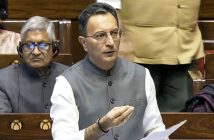India’s fight against poverty has made significant strides, with the latest World Bank revisions reaffirming that the country’s progress extends beyond statistical adjustments to real, measurable improvements in household living standards and incomes. A government factsheet released on Saturday highlighted the transformative impact of economic policies and data refinements that have reshaped India’s poverty narrative.
The World Bank recently revised global poverty estimates, raising the International Poverty Line (IPL) from $2.15 per day (2017 PPP) to $3.00 per day (2021 PPP). While this adjustment led to an overall increase in extreme poverty figures worldwide—adding 125 million people to the count—India’s data revision emerged as a statistical outlier in a positive direction. India not only resisted a potential surge in poverty figures but actively demonstrated a major reduction, with improved survey methodologies contributing to more accurate assessments.
Had the new poverty line been applied universally, global extreme poverty numbers would have risen by 226 million people. However, India’s revised data accounted for a 125 million-person reduction, tempering the global increase and highlighting the country’s strides in improving economic conditions at the grassroots level.
A key factor behind this breakthrough was India’s adoption of the Modified Mixed Recall Period (MMRP) method in its latest Household Consumption Expenditure Survey (HCES), replacing the outdated Uniform Reference Period (URP). This methodology, which incorporates shorter recall periods for frequently purchased items, captures consumption patterns more accurately, resulting in a more reliable measure of economic well-being. The shift translated into higher recorded consumption figures, leading to lower poverty estimates.
India’s poverty rate in 2011–12, when analyzed under MMRP, stood at 16.22 percent, compared to 22.9 percent under the older method. By 2022–23, the poverty rate under the revised $3.00 line dropped to 5.25 percent, while under the older $2.15 standard, it fell further to 2.35 percent.
The upward trend in consumption is evident in the rise of Monthly Per Capita Expenditure (MPCE). In 2023–24, the MPCE stood at Rs 4,122 in rural areas and Rs 6,996 in urban areas, excluding the value of items received free through social welfare programs. When these benefits were included, MPCE increased to Rs 4,247 for rural households and Rs 7,078 for urban households. These figures represent a dramatic improvement from 2011–12, when rural MPCE was Rs 1,430 and urban MPCE was Rs 2,630.
The urban-rural consumption gap has also narrowed, dropping from 84 percent in 2011–12 to 70 percent in 2023–24, indicating improved economic parity between rural and urban populations. All 18 major states reported increases in MPCE, with Odisha recording the highest rural rise at around 14 percent, and Punjab leading urban growth with a 13 percent increase.
Consumption inequality has also seen a decline, as reflected in the Gini coefficient, which measures disparities in economic distribution. Between 2022–23 and 2023–24, the rural Gini coefficient fell from 0.266 to 0.237, while the urban coefficient dropped from 0.314 to 0.284, signaling improved equality in spending power across most major states.
India’s poverty reduction is not merely the result of policy efforts but also a testament to evidence-based governance, sustained economic reforms, and enhanced methodological integrity. The country’s ability to withstand a raised poverty benchmark while improving its economic indicators sets a global precedent for effective data-driven decision-making.






